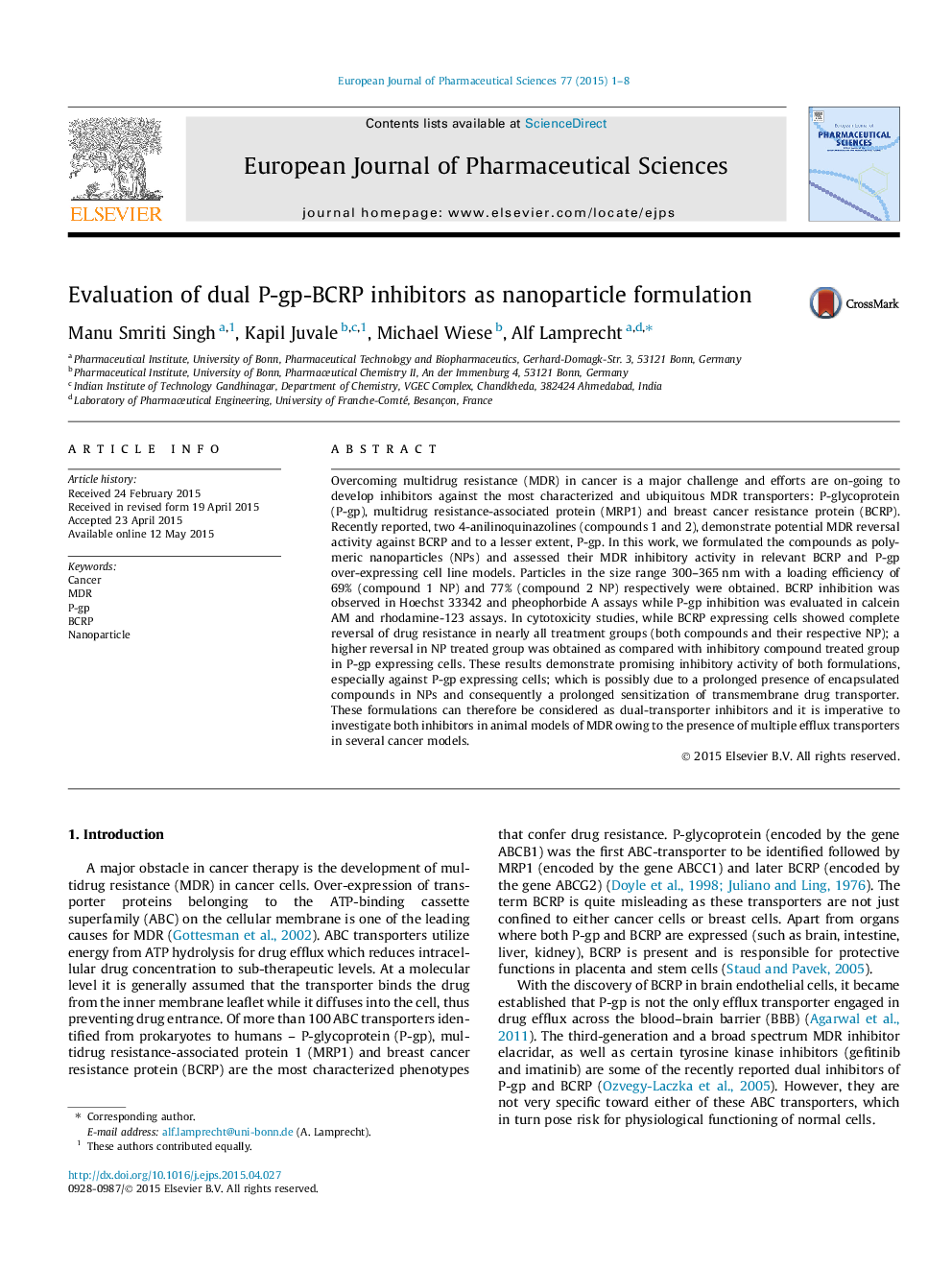| کد مقاله | کد نشریه | سال انتشار | مقاله انگلیسی | نسخه تمام متن |
|---|---|---|---|---|
| 2480255 | 1556173 | 2015 | 8 صفحه PDF | دانلود رایگان |

Overcoming multidrug resistance (MDR) in cancer is a major challenge and efforts are on-going to develop inhibitors against the most characterized and ubiquitous MDR transporters: P-glycoprotein (P-gp), multidrug resistance-associated protein (MRP1) and breast cancer resistance protein (BCRP). Recently reported, two 4-anilinoquinazolines (compounds 1 and 2), demonstrate potential MDR reversal activity against BCRP and to a lesser extent, P-gp. In this work, we formulated the compounds as polymeric nanoparticles (NPs) and assessed their MDR inhibitory activity in relevant BCRP and P-gp over-expressing cell line models. Particles in the size range 300–365 nm with a loading efficiency of 69% (compound 1 NP) and 77% (compound 2 NP) respectively were obtained. BCRP inhibition was observed in Hoechst 33342 and pheophorbide A assays while P-gp inhibition was evaluated in calcein AM and rhodamine-123 assays. In cytotoxicity studies, while BCRP expressing cells showed complete reversal of drug resistance in nearly all treatment groups (both compounds and their respective NP); a higher reversal in NP treated group was obtained as compared with inhibitory compound treated group in P-gp expressing cells. These results demonstrate promising inhibitory activity of both formulations, especially against P-gp expressing cells; which is possibly due to a prolonged presence of encapsulated compounds in NPs and consequently a prolonged sensitization of transmembrane drug transporter. These formulations can therefore be considered as dual-transporter inhibitors and it is imperative to investigate both inhibitors in animal models of MDR owing to the presence of multiple efflux transporters in several cancer models.
Figure optionsDownload high-quality image (84 K)Download as PowerPoint slide
Journal: European Journal of Pharmaceutical Sciences - Volume 77, 18 September 2015, Pages 1–8